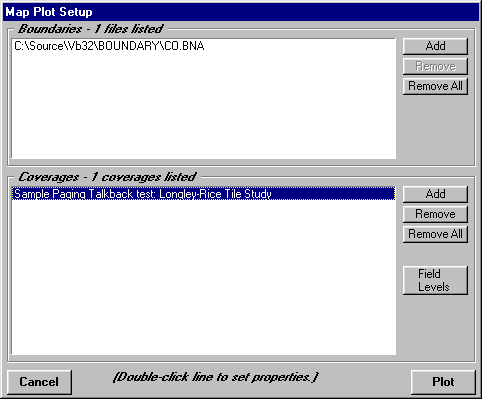
Q: How are talk-back calculations handled in TAP?
A: Designing an effective two-way mobile radio system actually requires two designs. The communication from the centrally located base station or repeater to the remotely located mobile units is commonly called talk-out. Equally important is the communication from the remote units, such as handheld portables or vehicle mounted mobile units to the base repeater, usually called talk-back.
Because the transmitting and receiving facilities for the two directions of communications are usually quite different, the effective range of talk-out and talk-back can be dramatically distinct. For example, a 100 watt base station with a 6dB gain antenna will be able to talk-out much farther than a three watt handheld unit with a 0dB antenna can talk-back. Service maps commonly show both areas, the talk-out and the talk-back as separate contours or threshold areas.
Three Black Boxes
In each case the transmit and receive system can be considered as three units (the engineer's ubiquitous "black boxes"):
When determining the service area for both talk-out and talk-back, the path between a given base site and remote location is the same for both talk-out and talk-back. In other words, given the physical geometry (distance, antenna heights, earth curvature) of the path the losses from obstructions will be the same for communication in either direction.
Tabulating the differences
Based on this simple assumption, the difference between talk-out and talk-back is really the composite difference between the facilities in the two cases (base to remote and remote to base). The following table illustrates the two systems using some sample values:
|
Talk-Out (Base to Pager) |
Talk-Back (Pager to Base) |
|
| TX ERP |
250W TPO, 9dBd antenna 2.76dB cable loss: 60.2dBm |
0.6W 27.78dBm |
| RX Ant | 0dB | 9dB |
| RX Loss | 0dB | -2.76dB |
| Available Power for RX | 60.2dBm | 34.02dBm |
| RX Required input power |
14uV 23dBuV –84dBm |
-17dBuV –124dBm |
| Available margin | 144.2dB | 158.02dB |
The table shows that the talk-out system has an "available margin" of 144.2dB (the difference between the computed available power and the receiver requirement). This means that other factors in the system, such as free-space loss, path losses, body losses at the mobile unit, etc., cannot exceed this value. As long as the total of all other losses in the talk-out system are within this range, the receiver requirement will be met, and the talk-out system will work successfully.
For the talk-back system, this available margin is 158.02dB, almost 14dB higher than the talk-out system. This can be viewed as a talk-back system that is 14 dB "more efficient" than the corresponding talk-out system. That is, the talk-back system can work with higher losses (due to terrain, body effects, etc.) than the talk-out system.
When the computed field strength values are plotted for the talk-out system, the area is shown using the required field strength computed for the mobile receiver configuration. In this example, the required power for the pager input of –84dBm, at a frequency of 800MHz, results in a required field strength value of approximately 51dBu. TAP can be used to plot the 51dBu field strength locations to show the talk-out coverage.
But since the talk-back system is approximately 14dB "more efficient" based on the comparative analysis above, the areas where talk-back is possible can be shown by the 37dBu (51 - 14) field strength locations.
It is important to understand that the talk-back value of 37dBu in this example does not represent a signal level in the usual sense. Rather, it defines the area where the overall difference between the fixed-mobile system and the mobile-fixed system is the 14dB computed above.
Talk-Back in TAP
When you set up a coverage plot, if any of the coverages are threshold studies (i.e., field strength computed at many points, in contrast to a contour study), the "Field Levels" button is displayed:

Click the Field Levels button to display the form used to set the field strength levels for the plot.
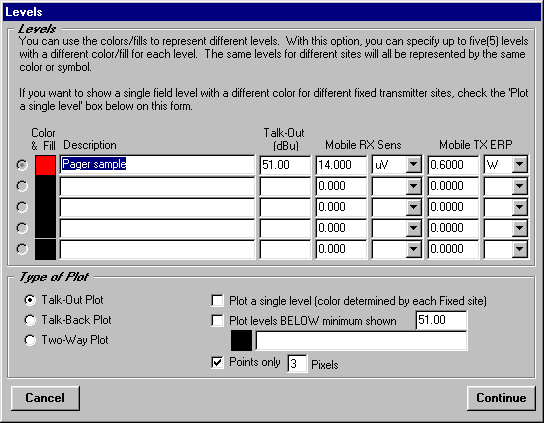
You can enter descriptions and the required field level (in dBu) for the talk-out coverage for one or more receiver configurations. You can also double-click on the "Mobile RX Sens" value to lookup a mobile configuration from the TAP Mobile Facility Data Base.
If you want to plot a Talk-Back study, you must also enter the mobile receiver sensitivity value and the mobile transmitter Effective Radiated Power value (or use the values from the mobile facility lookup).
Click the "Talk-Back Plot" option button, then click "Continue" to plot the talk-back values. The differences between the talk-out and talk-back configurations (as described above) are computed in the plot process to show the talk-back area.
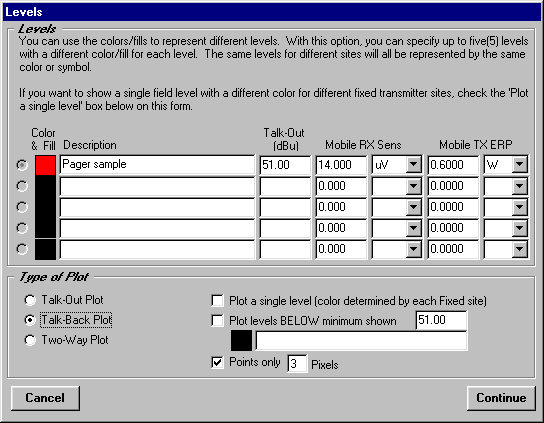
The "Two-Way Plot" option button forces the program to plot the field strenght locations where both talk-out and talk-back criteria are satisfied.
For example, the following maps show the talk-out, talk-back, and two-way coverage locations. Notice the northeast portion of the area (near the Talk-Out Area label) where the talk-out coverage is more limited, and therefore the two-way coverage is similarly limited.:
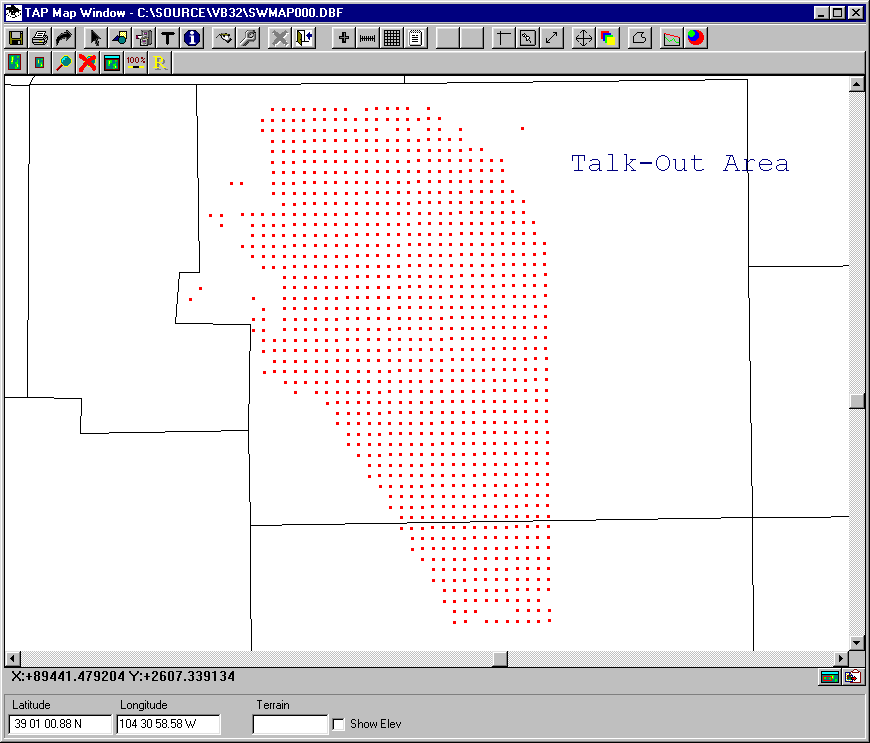
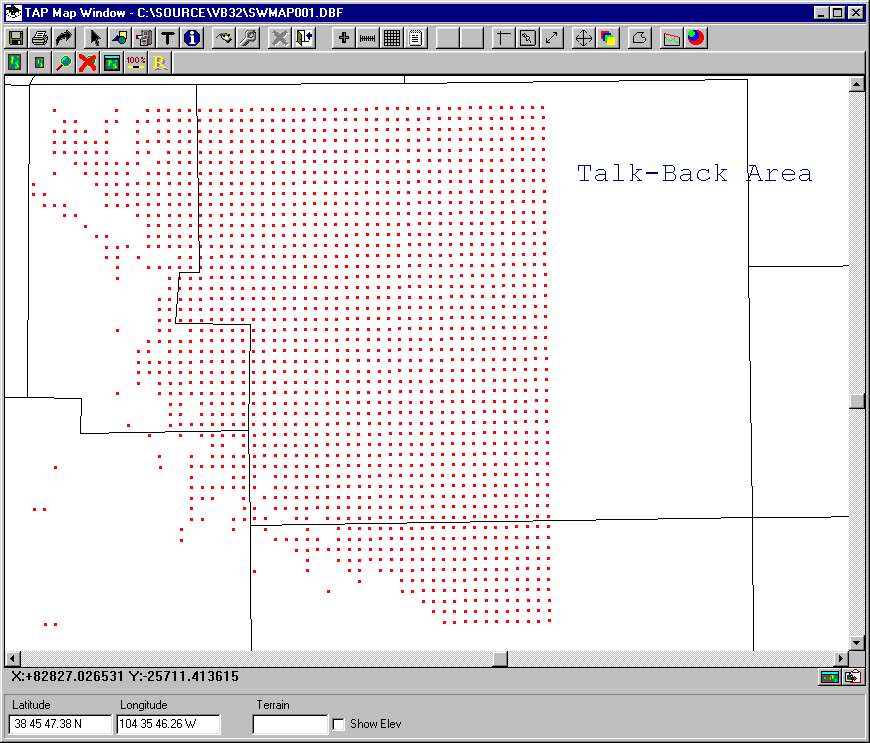
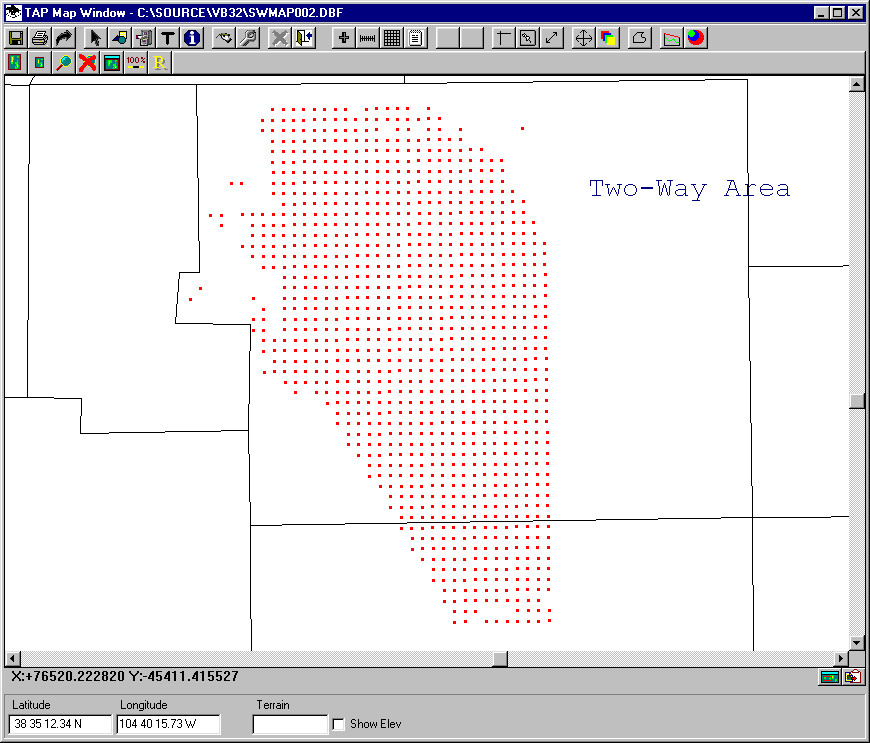
Copyright 1999 by SoftWright LLC